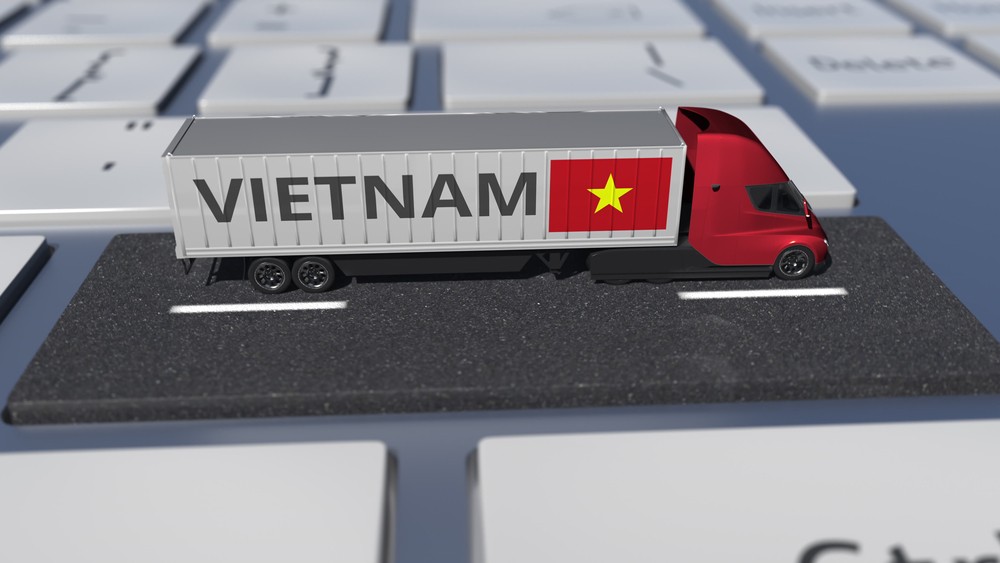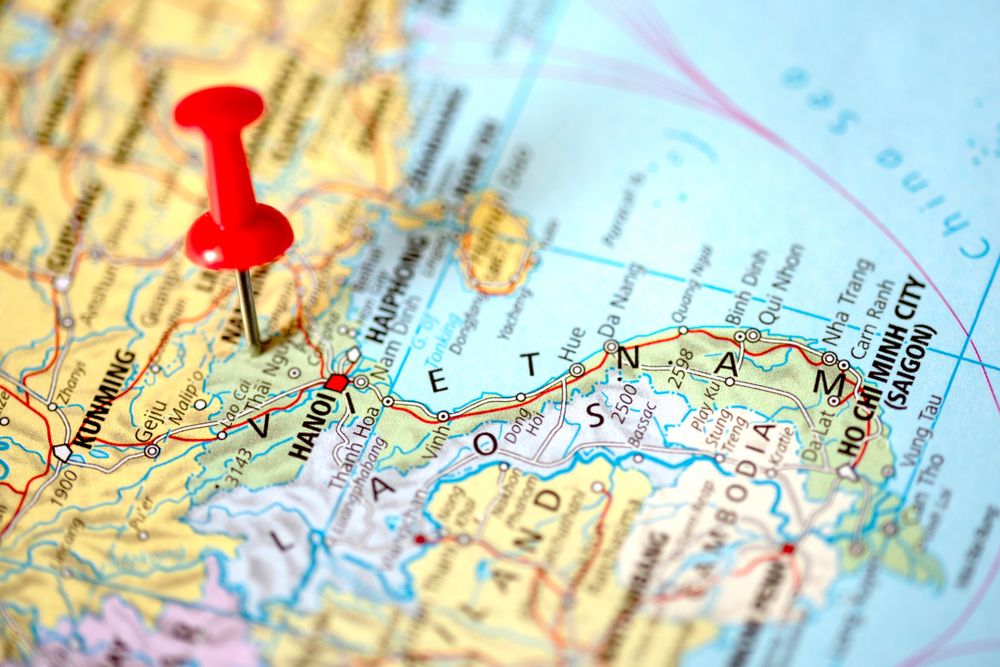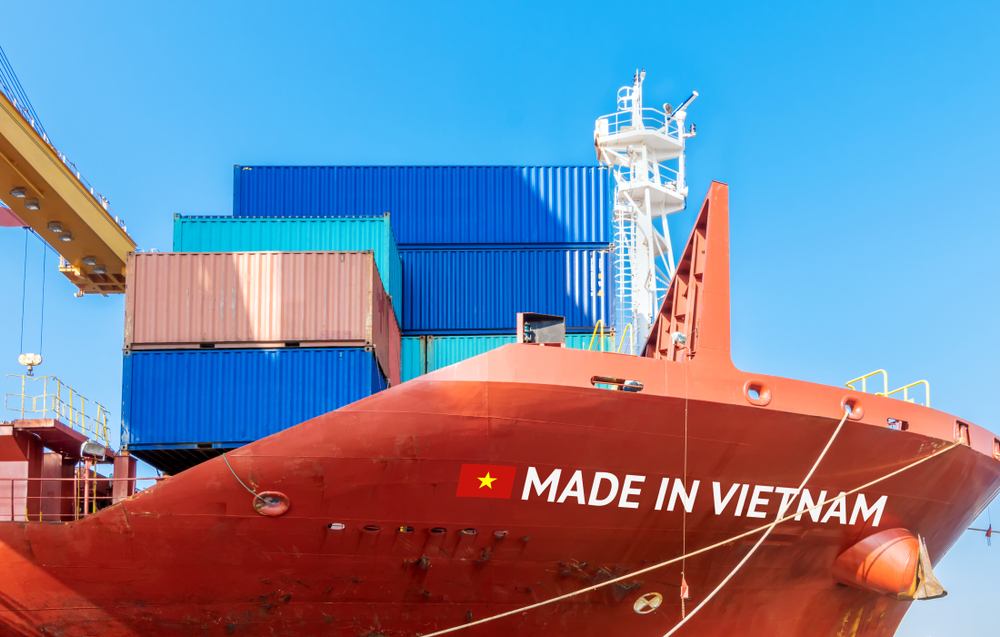International Branch
SCB Ho Chi Minh City Branch
To make your overseas business uninterrupted SCB's international branch network is ready to support and provide services.
Logistics systems pioneer CAC Vietnam on Asia’s rising market
With over sixteen years in Vietnam, Khun Adisai Prasertsri, CEO of Chance and Challenge Co., Ltd (CAC Vietnam), an importer and distributor of Thai products in Vietnam specializing in logistics, has been successful in bringing Thai products to the Vietnamese market in 65 provinces. He shared his experience with Khun Akesak Wiwattananon, Business Development Officer, SCB International Banking Function, SCB, Ho Chi Minh Branch.
A pioneering investor’s perspective
Khun Adisai recounted his decision to invest in Vietnam sixteen years ago, saying that at that time Vietnam had a population of 86 million with GDP/capita of USD 810 per person per year. He believed that the market could grow even more, so Khun Adisai decided to set up a distribution infrastructure in Vietnam. Now Vietnam has some 33 million people classified as middle class, with a population growth of 800,000-900,000 people per year.
Experienced in running a business related to consumer products, Khun Adisai decided to enter the Vietnamese market in 2005 when Thailand was promoting exports. Thai products were well-known among the Vietnamese people for their good quality and prices that were not out of reach. In addition, Vietnamese people liked to visit Thailand, so they knew Thai products well. With higher purchasing power, they began to enjoy more product choices from Japan and Korea as well.
Vietnam permitted foreigners to do business in their country after becoming a World Trade Organization (WTO) member in 2008. Having entered Vietnam in 2005 by registering his company with a local partner, Khun Adisai was able to register his company under his own name in 2008. Entering the market before anyone else provided more opportunities. In 2012, he set up distribution centers in several provinces. Later in 2014, the company opened its first distribution center in Da Nang, taking care of five provinces in the central region. By 2019 he had six distribution centers across the country, and expanded to ten locations in 2020, operated by a team of 700 sales and back-office support staff. “With rapid economic growth and the geographical characteristics of a long country, distribution of products is an important factor to reach consumers as quickly and as much as possible. Therefore, my company focuses on opening distribution centers,” said Khun Adisai.

SCB, a business partner for Thais in Vietnam
CAC Vietnam used financial services from SCB, then Vinasiam Bank, from the outset. When SCB opened an office in Ho Chi Minh City, CAC Vietnam was not reluctant to continue the business relationship. SCB treats Thai investors in Vietnam as more than just its customers, but as relatives and friends. The Bank took good care of CAC Vietnam even though it was just a small company. Khun Adisai said that when it comes to business matters, no one can be trusted better than a Thai bank as we speak the same language and understand investors. He would like to recommend that Thai investors doing business in Vietnam use SCB as a partner for business consultation.
Mr. Akesak further explained that SCB has operated in Vietnam since 1995 as Vinasiam Bank. It was a joint venture with a local bank and the CP Group. SCB received a license to operate a branch in 2015, and the bank’s first branch was opened in Ho Chi Minh City in 2016. SCB’s strength lies in its knowledgeable staff working with the Bank for a long time. They have a good understanding of business rules and regulations in Vietnam, while the customer care team has Vietnamese staff with extensive experience. As a full branch, SCB provides a complete range of services, from opening investment and operating accounts used in Vietnam, trade finance (L/C, bank guarantees), currency exchange for both USD and Thai Baht, and loans to Thai and Vietnamese customers.
The advantage of using Thai banks speaking the same language is that it is more convenient and easier. A process can start from Thailand, with no need to send documents to Vietnam, or customers can send them via SCB in Thailand. This is especially convenient during the COVID-19 outbreak when investors can't fly to Vietnam. Most importantly, SCB is familiar with the network of Thai businesses and Thai government agencies in Vietnam, so it can offer practical advisory services.
Vietnam Economic Overview
Khun Akesak noted that Vietnam currently has a population of 97.6 million and that most people own mobile phones. Electronic components are Vietnam’s main export product, accounting for USD 271 billion in 2021, growing 6-7% on average over the past five years. The value of foreign direct investment (FDI) each year stands at about USD 16 billion, with most FDI going to the manufacturing and export sectors. Thailand is Vietnam’s seventh-largest trading partner, behind China, the United States, South Korea, the European Union, and Japan, and the country has signed free trade agreements (FTAs) with key market countries across the world. Moreover, more than half of its population are young workers, playing an important part in driving economic growth even further.

Attractive industrial sectors for Thais
Energy - In recent years, most of the Thai private sector has invested in the energy segment, such as solar farms or wind farms. Vietnam's energy industry has grown by 12% per year due to demand for more energy, and government policy calls for energy production to double within ten years. Most Thai investors are big companies.
Manufacturing – Investors have set up manufacturing plants for domestic markets and exports. Free trade agreements signed with key economies across the world offer strong potential. Other favorable factors include a reduction in corporate income tax, stable politics, and plenty of quality workers.
Retail/Wholesale – Vietnamese consumers have high purchasing power, are willing to spend, and have a good attitude toward Thai products because they feel they are of good quality and reasonably priced compared to Korean and Japanese products. Household debt remains low.
CAC Vietnam’s Logistics system
CAC Vietnam has two pick-up points, at Ho Chi Minh and Haiphong ports. From the port cities, the company operates warehouses, equipped with modern technology to efficiently manage supply chains and cargo from its main warehouses to sub-warehouse. The Vietnamese are smart and quick to learn and have adopted technology such as software and the Internet. Personnel management must involve two-way communication. One-way top-down communication is not the right solution.
CAC Vietnam employs an HR team of both Vietnamese and Thais to talk with and engage with Vietnamese and foreign employees, finding out what they want and gathering data to analyze and plan training to upskill them for their future career paths. There are clear performance reviews to ensure that Vietnamese employees understand what is wanted. It's important to communicate your thoughts and policies.

Three Strategies to Build a Business in Vietnam
Khun Adisai mentioned three strategies he adopted to pioneer his business in Vietnam:
1) Products must meet consumer demands. Don't assume that a product used by Thais will be successful in Vietnam. The Vietnamese market has its own identity, unlike Laos and Cambodia. It is necessary to study the market thoroughly to determine what consumer groups want, and which products, in order to determine marketing plans, sales, packaging, and prices.
2) Logistics is a priority. Vietnam has encountered a lot of problems because distribution is inefficient due in part to its large geographical area. Vietnam has three major cities, namely Ho Chi Minh (south), Hanoi (north), and Danang (central) and the behavior of people in each region is different and independent, unlike Thailand, where most activities are centered in Bangkok. Access to consumer behavior and logistics plans are therefore very important.
3) Thai businesses often fail to understand the habits of Vietnamese people. Currently, the cost of living in big cities is similar to that of Thailand. Labor-intensive businesses should look for provincial areas outside big cities. However, service businesses must compete using online marketing with sales stationed in big cities. Businesses should not expect to pay less than they would in Thailand. Vietnamese workers will ask clearly about their compensation and the benefits they will receive, such as training, business trips, field trips, and similar things. If they do not receive what is agreed upon, they will leave. If you can't manage this issue, you will encounter a high turnover rate.
Four precautions for new investors
1) Vietnamese regulations are not simple, and the government enforces strict regulations which Thai entrepreneurs often neglect. If investors are willing to comply, it’s not that difficult.
2) The distance between Vietnam’s northernmost to the southernmost parts is 1600 km. With its road system still having problems, investors must plan their supply chain distribution properly, as they have to consider the cost of bringing products into and out of the area and understand details about transportation routes, bridges, etc. During the Vietnamese Lunar New Year workers will take a 20-day leave, so it is important to plan workforce and supply chain issues well.
3) Understand the fundamental problems of Vietnam. Each region is different, and they have different strengths and weaknesses. Investors must understand the obstacles and challenges of each area before entering the market in different zones, such as the Southern Mekong Delta, tourist cities in the Central region, the Western Central Highlands, and Hanoi - Haiphong in the North. Every area affects the selection of investment and distribution points.
4) Amid the COVID-19 situation requiring a 14-day quarantine, sending Thai employees to Vietnam is difficult. Therefore, investors must rely on good partners like SCB to help follow the news from the embassy. Market research may require the services of research firms. Don't even think about investment without studying first.
Khun Adisai added that the key question is to carefully examine yourself to see if your business is suitable for this country or not, such as ensuring that the business is strong enough in Thailand if the product is suitable for the market, and how you can drive the business. A business will take time to succeed, and we must explore ourselves clearly to determine whether or not we are meant for the Vietnamese market.
Source: Vietnam 2021 Trade Opportunities After the Covid-19 Crisis broadcast on Phonlamuangdeegital Facebook on 26 March 2021